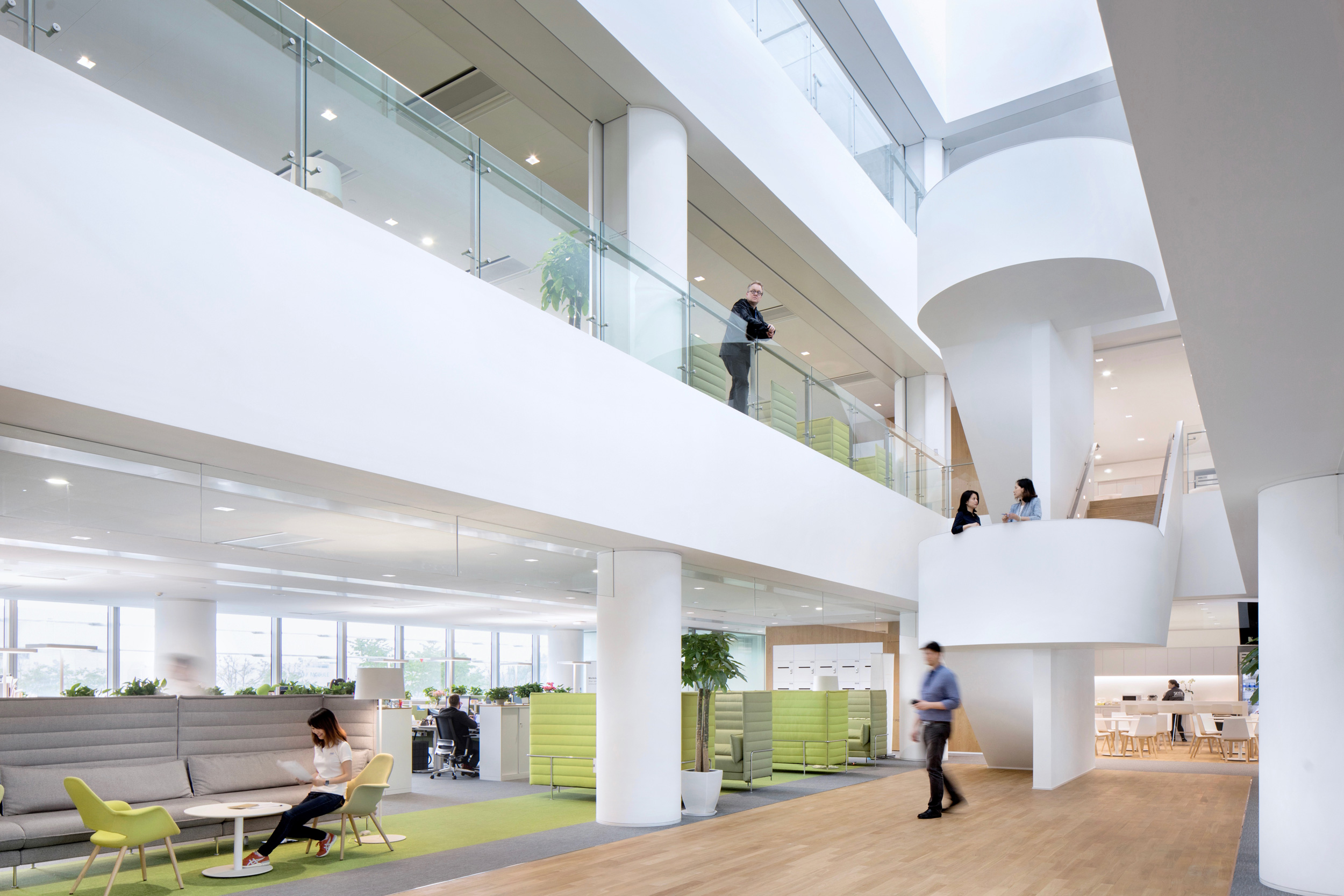
Bright spaces
Natural light exposure boosts creativity and well-being; it also enhances spatial quality and the awareness of time.
Architecture is the masterly, correct, and magnificent play of masses brought together in light. Our eyes are made to see forms in light; light and shade reveal these forms.Le Corbusier - Architect
Capturing the light
Prioritise the location of operational work tasks in the areas with higher incidence of day light, as all permanent working spaces must have natural light. The contrast between perimeter windows, the ceiling, the floor, and vertical surfaces creates the potential for glare, therefore, use diffuser light coloured surfaces to reflect sunlight into the interior. The light transmission coefficient (LT) of colours is a key factor to the intensity of natural light reflected into the space, recommended values ensure a bright interior space.
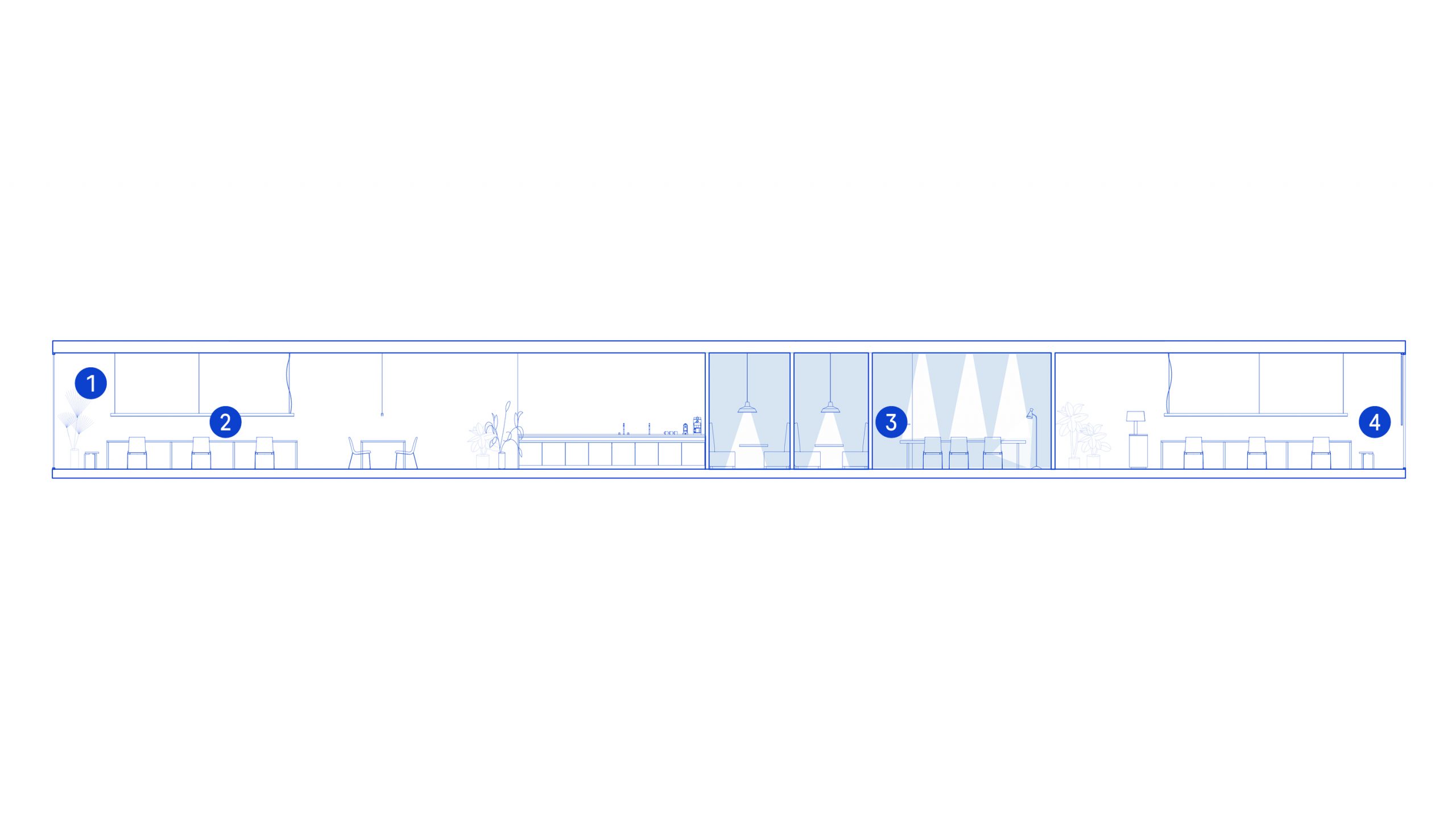
Transparency for a sense of openness
Use transparent partitions and translucid elements close to windows to bring natural light into the building as deeply as possible.
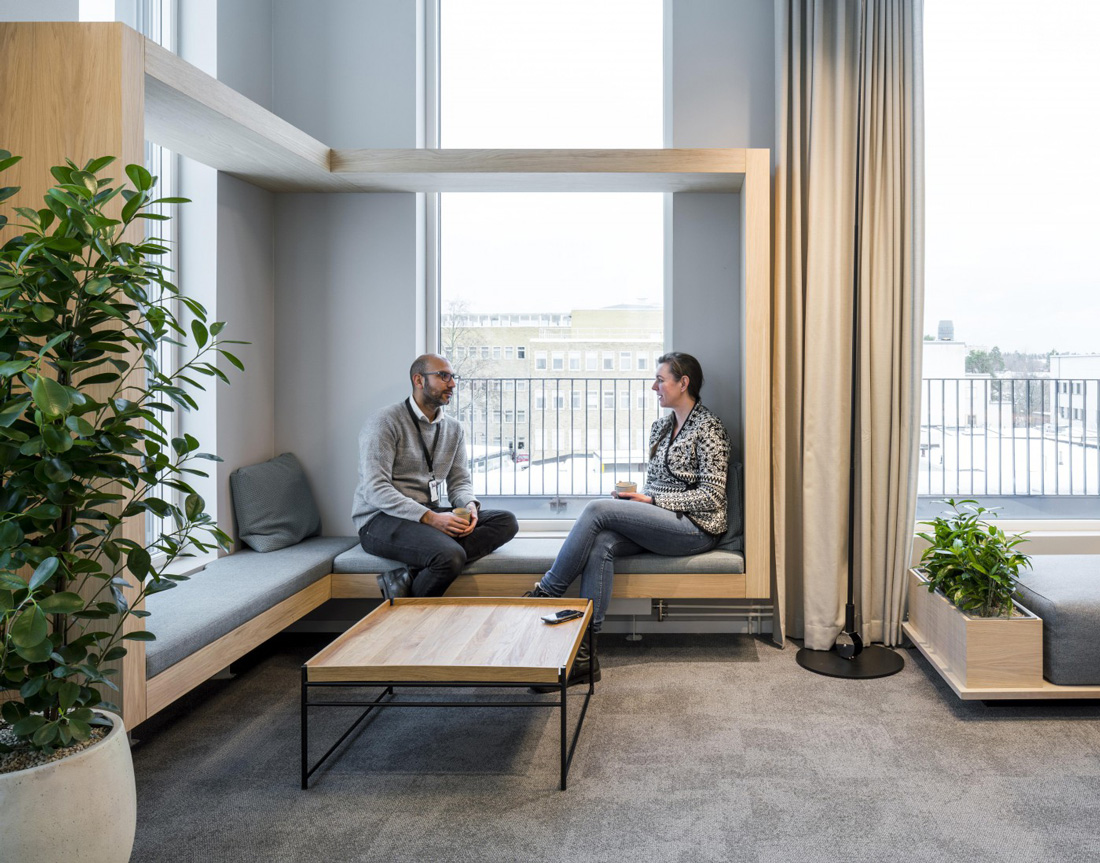
- Plants are an effective solar radiation filter.
- They can also be used as space dividers.
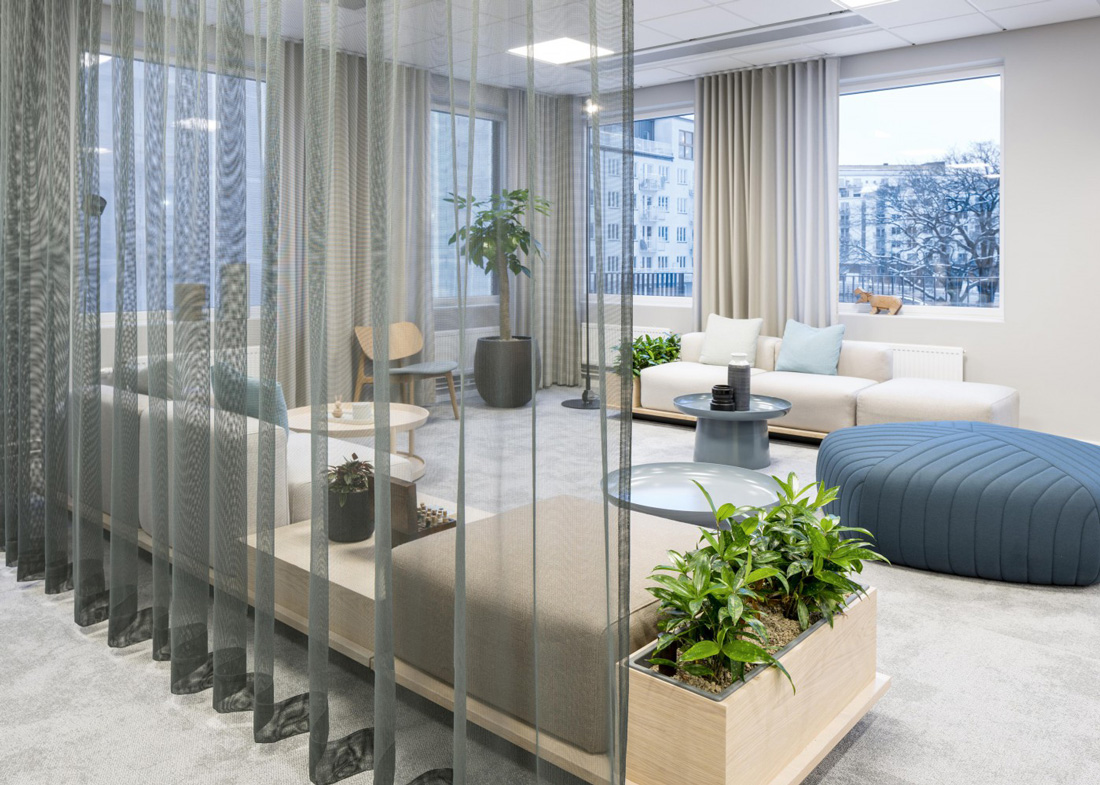
- Translucent curtains allow light to flow and offer a flexible solution for delimiting different spaces.
- Low height partition panels are also an alternative, although less flexible.
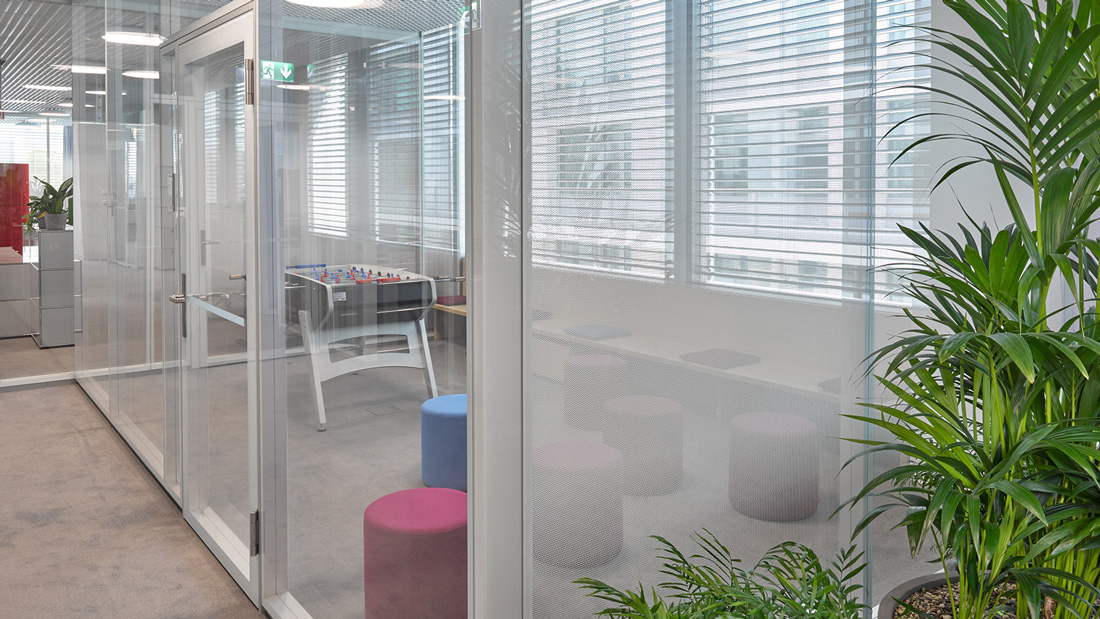
- All the partitions of an enclosed area that are oriented to windows should be transparent, additional privacy can be provided by curtains, which give flexibility while adding acoustic value if required.
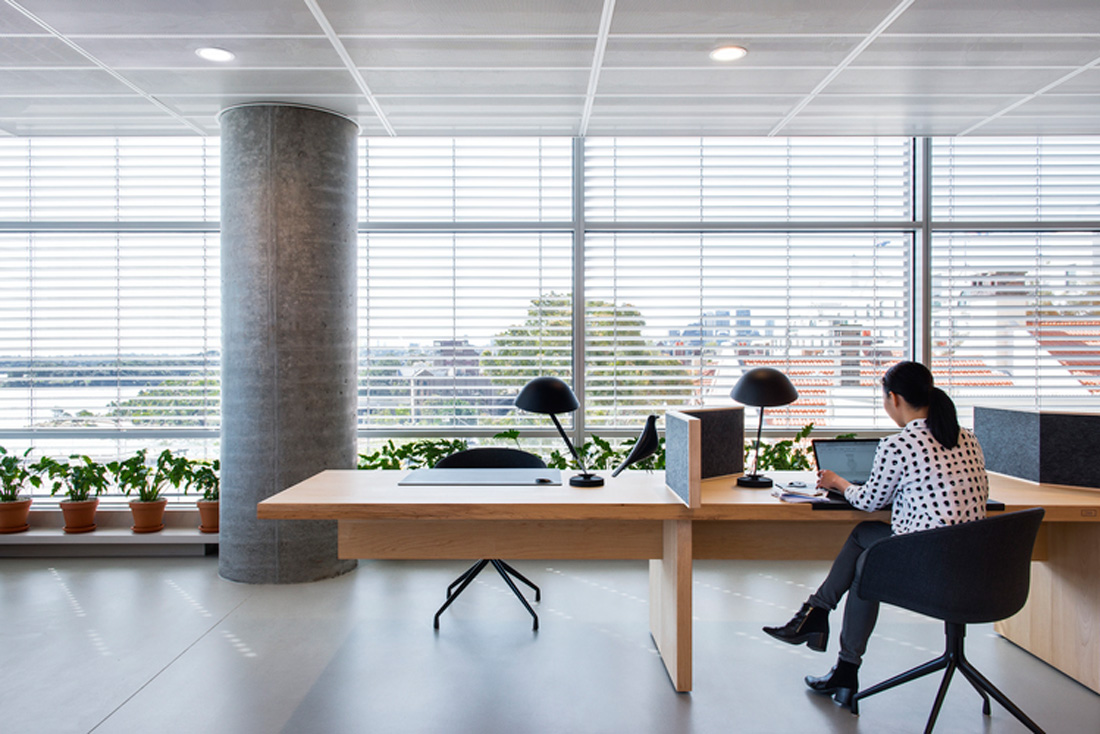
- Control direct sunlight at visual task areas with glare protection systems.
- Provide balanced illumination on interior surfaces taking into account daylight and artificial light, avoiding glare and extreme contrasts.
Create sequential spaces, encourage cross views
The height of elements that define open work areas should be carefully considered. Natural light should be allowed to flow throughout. Visual connection between different areas should be intentionally designed, avoiding monotony and encouraging users to move freely around the workplace.

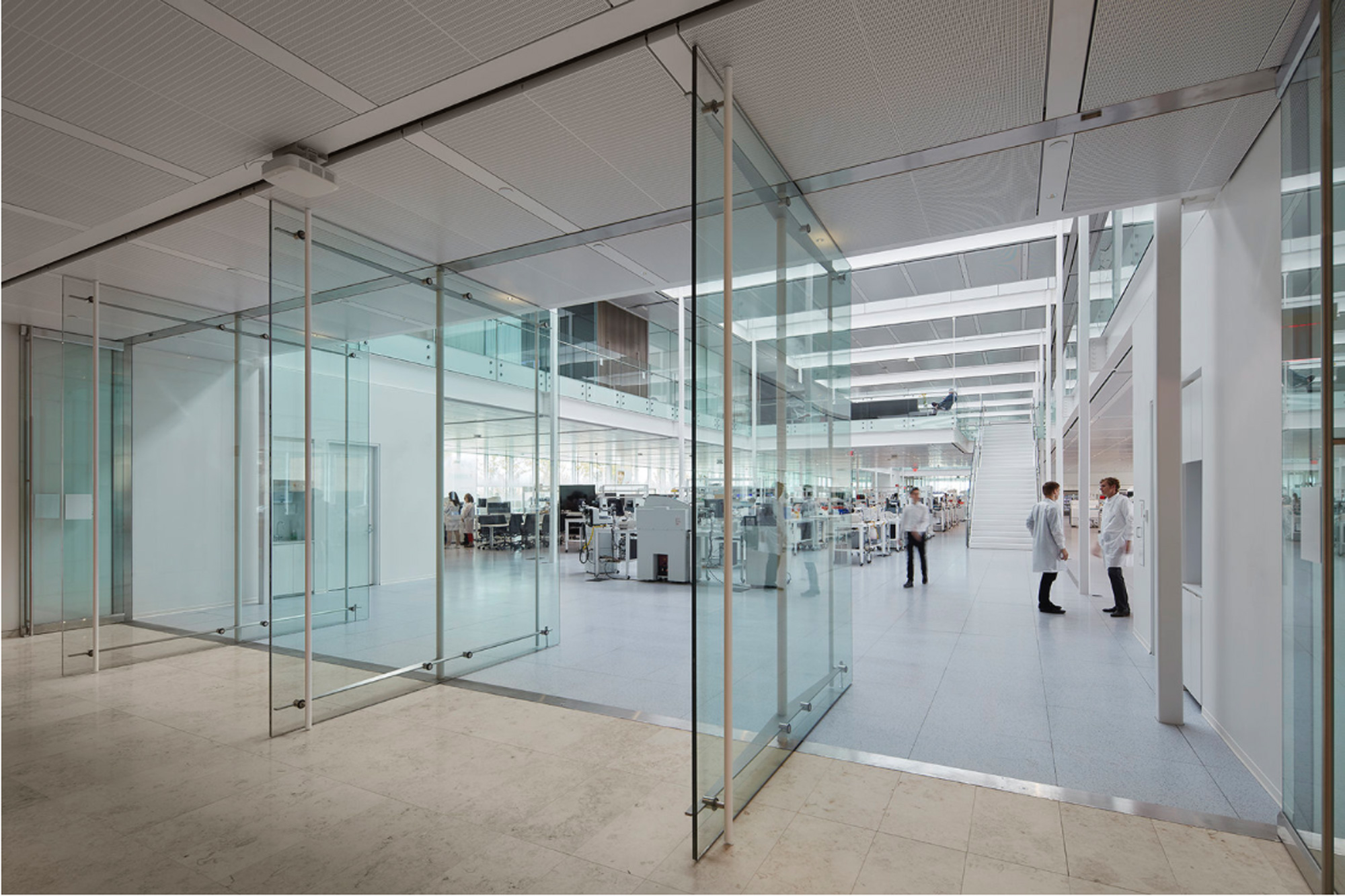
Key to Bright spaces
- All permanent workspaces should have quality natural light.
- Allow light to travel across different areas using transparent or translucent partitions for a sense of openness.
- Quality of light depends on the materials’ reflectivity, so consider light transmission coefficient (LT) when defining colours and finishes.
- Be cautious with materials that have highly polished surfaces and glossy textures, as they cause glare.